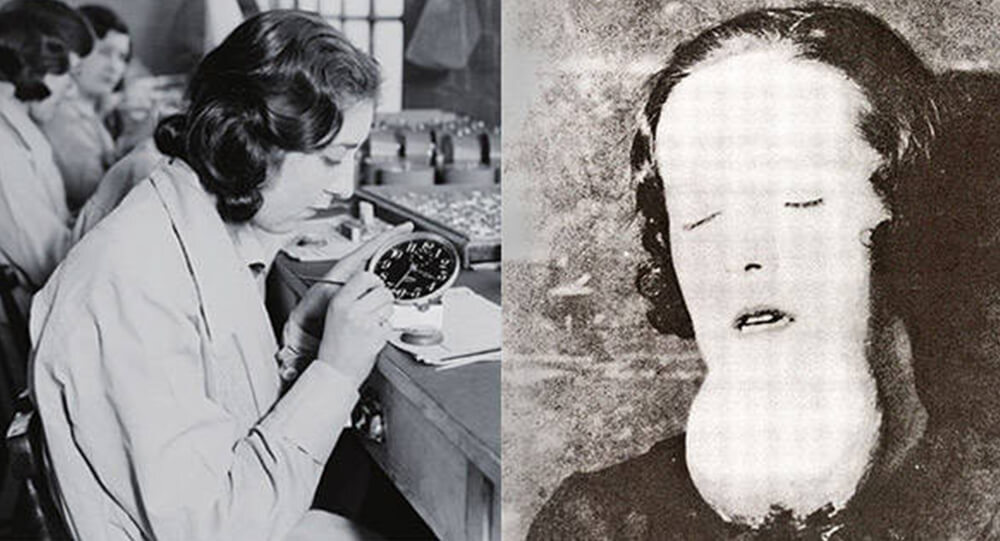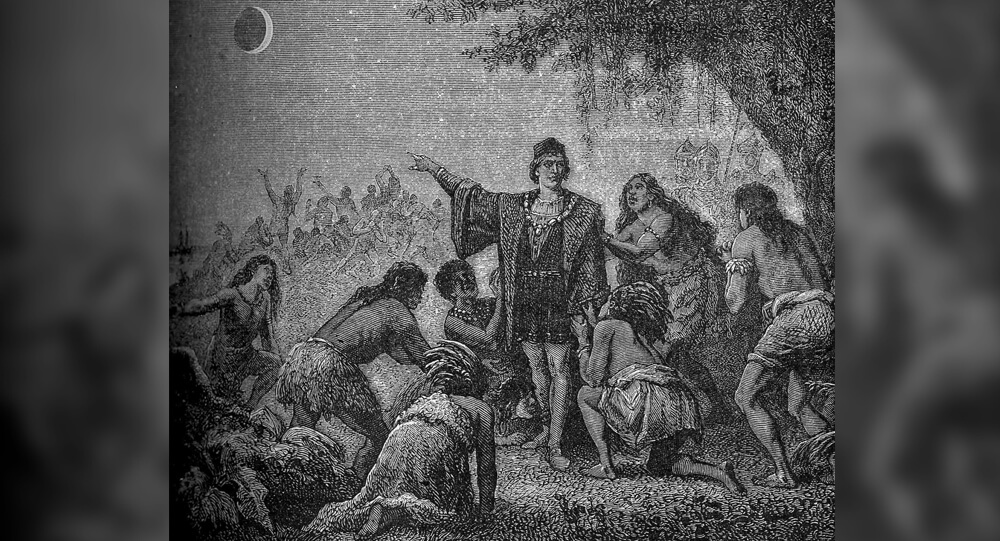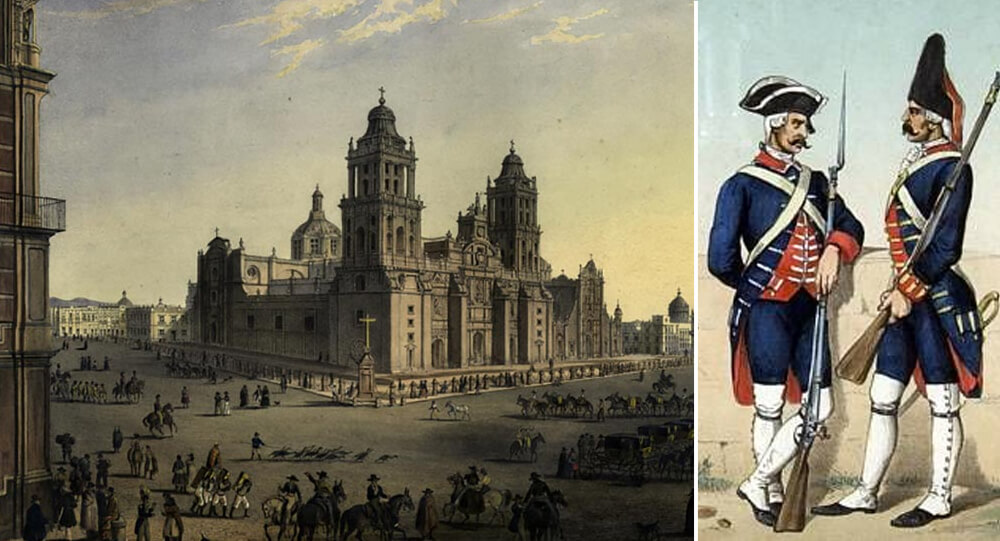
The antebellum South’s enslaved population had a route to liberation thanks to the Underground Railroad. Many of slaves, however, managed to escape by traveling to Mexico in the south.
During a journey to northern Mexico, historian Alice Baumgartner, an assistant professor at USC Dornsife College of Letters, Arts, and Science, came upon this piece of American history.
She was a PhD student at Oxford University at the time, working on a thesis about border violence in the late 1800s. Throughout her study, she came across several intriguing letters and legal documents. They talked about American slave owners going to Mexico to capture escaped slaves.
During an eight-year odyssey that began with a chance discovery, Baumgartner wrote her first book, South to Freedom: Runaway Slaves to Mexico and the Road to the Civil War.
In addition to historical repositories on both sides of the US-Mexico border, Baumgartner discovered documentation from 1819 in Mexico City. Transcripts of interviews municipal officials conducted with former slaves who had been the targets of attempted kidnappings by their former owners were among them.
“That was really a gold mine,” Baumgartner said of the records.
She also found correspondence between officials in northern Mexican towns who claimed to have seen Americans claiming to be looking for cattle that had gone missing. Authorities believed they were actually seeking for runaway slaves.
Slavery was outlawed in Mexico in 1837, several years before its northern neighbor. As soon as they set foot on Mexican land, enslaved persons had access to freedom under the laws of the country. In accordance with the US’s Fugitive Slave Act, Mexico authorities similarly refused to send runaways back.
Mexicans ended slavery long before Americans did: Many viewpoints
According to Baumgartner, the work is an example of a trend among American historians. a Civil War. In hopes of understanding the borderlands better, they are currently exploring for sources outside of the United States.
It may take a bit more effort to locate non-American materials, such as going to Mexico and studying Spanish, but doing so exposes historians to various viewpoints and tales.
If she had remained in Canada, she thinks she would never have discovered this tale.
The Texas state archives certainly mention slaves fleeing to Mexico, but they frequently add that conditions there were so terrible that the people returned to Texas, according to Baumgartner.
Baumgartner discovered a more complicated history by looking at sources from both nations.
The situation in Mexico was not so severe that slaves sought for new bonds. It wasn’t quite a utopia, though. In that country, enslaved people experienced racism, discrimination, and indentured servitude.
Mexicans welcomed them as neighbors, coworkers, and even family through marriage, giving them allies at the same time.
According to her, “We frequently think about mass migration into the United States, first from Mexico and now from Central America, as solely moving in one direction and the United States being this beacon for people to come to.” “I believe it is crucial to remember that, for certain people, it was the opposite in the 19th century. Mexico was the destination that offered a kind of freedom that the United States didn’t.”
Leveraging uncertainty to create teachable moments
South to Freedom originally started as a master’s thesis on a different topic, but Baumgartner recognized the issue’s potential and changed directions. It’s a good illustration of how dynamic history is.
Finding new insights into our past is a part of studying history.
No project I’ve ever worked on has gone as predicted, according to Baumgartner. This one, in my opinion, could have gone in a lot of intriguing directions.
For the student, the lecturer sees this as a learning opportunity: Don’t give up if something unexpectedly challenges your assumptions. Accept the uncertainty.

History of Treadmill, punishment for prisoners
Treadmills were originally a punishment used to harness human power on a giant wheel used to grind grains, hence the name "treadmill." The History of Treadmill

The true story Of The Radium Girls that change US labor laws
Hundreds of young women worked in clock factories during World War I, painting watch dials with luminous radium paint. The company lied about the risk of radiation, claiming there was no danger, which resulted in the death of the young women.

how Ferris wheel invented
In 1891, Chicago challenged engineers to create a structure to surpass the Eiffel Tower for the World's Columbian Exposition. George Washington Gale Ferris jr. responded with the original Ferris Wheel, a giant rotating structure elevating visitors above the city. This invention became an iconic attraction at the fair.

The incredible story of Julia "Butterfly" Hill and her legacy
American environmental activist Julia “Butterfly” Hill lived in a 1500-year-old California Redwood tree for 738 days to prevent it from being cut down by the Pacific Lumber Company. The Simpson’s episode “Lisa the Tree Hugger” was inspired by Hill’s story.

Albert Einstein’s brain after it was stolen from his body
Albert Einstein's brain was taken by the opportunistic pathologist who performed his autopsy hours after he died and kept in two jars for 30 years. The stolen brain of Albert Einstein was preserved in a cookie jar for 30 years until being discovered by a journalist.

How did Howard Florey discover penicillin
Penicillin was discovered by Alexander Fleming, but he never attempted to turn it into an antibiotic. It wasn't until ten years later that Howard Florey discovered Fleming's obscure paper and understood the mold's potential. Up to 200 million lives may have been saved as a result of Florey's work.

The Tragic Story Of Mary Ann Bevan, The ‘Ugliest Woman In The World’
After the death of her husband, Mary Ann Bevan had no income to support herself and her children. She then decided to enter a contest where she won the title of “ugliest woman” and was later hired by a circus. She endured this ridicule from the world to provide for her family.

How a Total Lunar Eclipse Saved Christopher Columbus in 1504
In 1504, Christopher Columbus was stranded in Jamaica with natives who refused to give him food. But he knew the date and time of an upcoming lunar eclipse. So he told the natives that his gods were angry at their treatment of him, and would provide a clear sign. Once the eclipse started, the natives raced to give him food and begged for mercy.

New London School Explosion, Deadliest school disaster which killed almost 300 children and teachers
In 1937, a gas leak in the basement at the local school in New London, Texas caused a massive explosion which killed almost 300 children and teachers, the deadliest school disaster in US history. Adolf Hitler even sent his condolences by telegram.

How European Rabbits Took over Australia
In 1859, wealthy settler Thomas Austin released 13 wild rabbits on his Australian estate. By 1920, their population grew to 10 billion.

The World’s First Seismograph: How Ancient China Detected Earthquakes 1,800 Years Ago
Over 1,800 years ago, long before modern technology, the ancient Chinese astronomer and inventor Zhang Heng created the world’s first seismograph in 132 AD. This ingenious bronze device could detect distant earthquakes by releasing small balls from dragons’ mouths into toads’ mouths—each indicating a different compass direction. Its historic detection of an earthquake 400 miles away astonished the imperial court and transformed the way societies understood and responded to seismic events.

Hedy Lamarr, A Hollywood actress who also a mathematician and inventor
Hollywood actress Hedy Lamarr was also a mathematician and the inventor of frequency hopping spread spectrum, a technology still used for bluetooth and wifi

Blanche Monnier: Imprisoned For 25 Years For Falling in Love
Blanche Monnier, she was a French woman noted for her beauty, she wished to marry an old lawyer that her mother disapproved of, so she locked her in a small dark room in her attic for 25 years.

Terry Fox, a 21-year-old one-legged cancer patient who ran 143 days before dying
Terry Fox was a 21-year-old one-legged cancer patient who ran 3,339 miles across Canada in 143 days before dying.

The Horrific story of Ariel Castro and the Cleveland abduction
Cleveland abduction victims Gina DeJesus, Michelle Knight, and Amanda Berry were forced to live in Ariel Castro's house of horrors for 10 years. He raped and beat them until they escaped in 2013.

William James Sidis: The smartest person yet forgotten by people
William James Sidis, who was only 11 years old when he enrolled in Hardvard, finished his primary and secondary schooling in less than a year. He knew eight foreign languages by the age of eight and even invented his own language, "vedergood."

Keith Sapsford: The Story of 14-Year-Old Stowaway
The final image of 14-year-old Australian Keith Sapsford, who aspired to travel the world. In February 1970, he sneaked into the wheel-well of a plane flying from Sydney to Tokyo. It opened mid-air & fell out. When a photographer was testing a new lens, he captured this moment on film and was surprised when it developed.

Did Gil Pérez Really Teleport from Manila to Mexico Overnight? The 1593 Mystery
On October 24, 1593, while performing his guard duties at Manila's Governor's Palace in the Philippines, Gil Perez stopped to lean against a wall and sleep for a while. He opened his eyes to find himself in an unusual environment. Gil was in the Plaza Mayor in Mexico City. They imprisoned Perez, but the authorities in Mexico City decided to release him and return him home.

Mario Segale, Developer Who Inspired Nintendo to Name Super Mario
Super Mario is named after real-life businessman Mario Segale, who was renting out a warehouse to Nintendo. After Nintendo fell far behind on rent, Segale did not evict them but gave them a second chance to come up with the money. Nintendo succeeded and named their main character after him.

Man's Blood Helped Save Millions of Babies
Australian blood donor James Harrison has been one of our most impressive and valued donors, having donated for 60 years. Know his story, how he was a pioneer of our Anti-D program, and why this matters.

George Dantzig solved two famous “unsolved” problems in statistics mistakenly as assignment
In 1939, George Dantzig arrived late to his statistics class. On the board were two famous “unsolved” problems in statistics written as an example by his professor. Dantzig mistook the examples for homework assignments. He solved the “unsolved” problems and submitted the homework to his professor a few days later. His solutions earned him a doctorate.

8 Interesting Facts About The Unsinkable Ship, TITANIC
If you ask your friends what's the most famous ship in history the answer in most cases will be the same, of course the legendary Titanic. Its history is full of mysteries, at first it was a source of hope and national pride as well as proof of the triumphs of mankind but it soon became a source of nostalgia and pain, the extent of which cannot be described in words.

Why the Word ‘Pen’ Comes from the Latin ‘Penna’ Meaning Feather
The humble word “pen” carries a rich history rooted in ancient times, derived from the Latin word penna, meaning “feather.” Long before modern pens revolutionized writing, feather quills—especially from geese—were the essential tools of scribes, scholars, and artists. This article journeys through the origins of the pen, its evolution, and fascinating trivia about the timeless connection between feathers and writing.

3 men lived on top of a billboard in tents for almost 9 months
From 1982-1983, three men in Allentown PA competed in a radio contest in which they lived on top of a billboard in tents. Whoever stayed up longest would win a house. Due to economic pressure from the recession, none of the contestants wanted to give up, so the contest lasted almost 9 months.

15 interesting facts about Queen Elizabeth II
Queen Elizabeth II, who ruled Britain for 70 years, has away at the age of 96. She was the country's longest-reigning monarch. Here are some little-known facts about her.


























